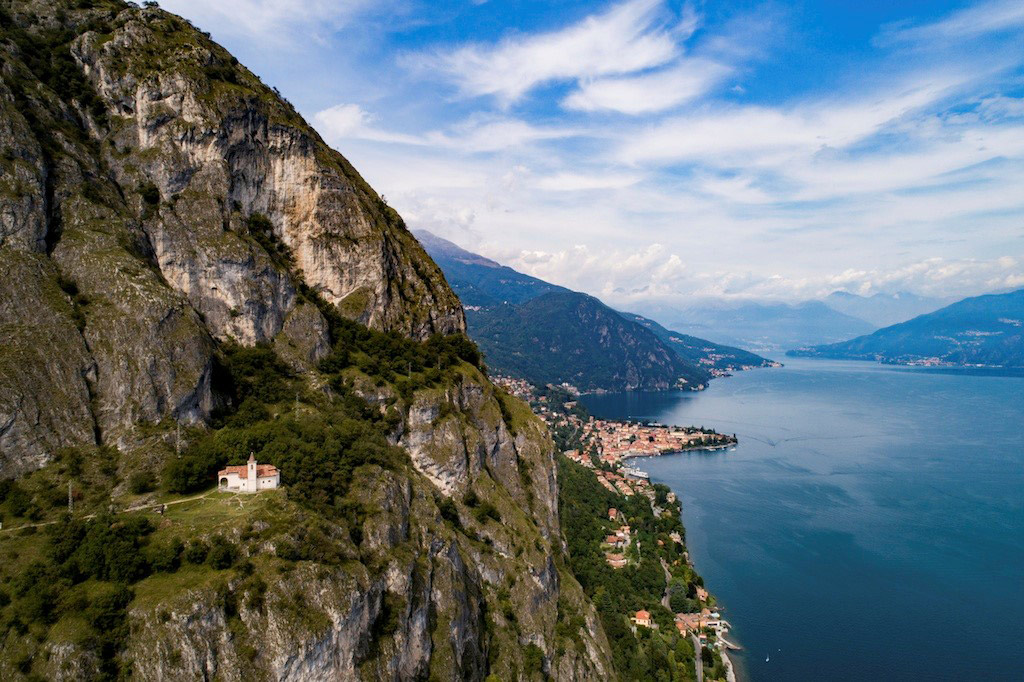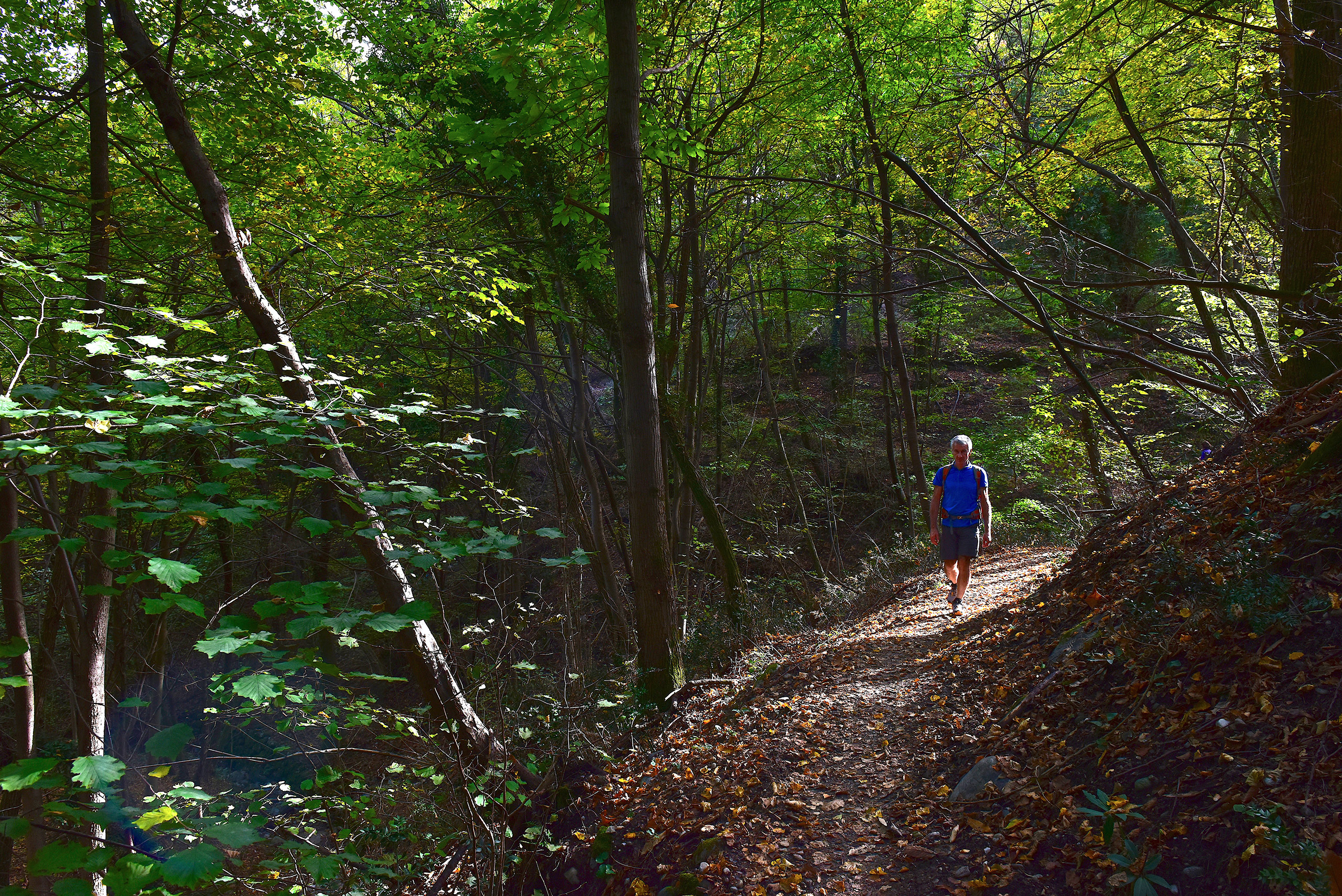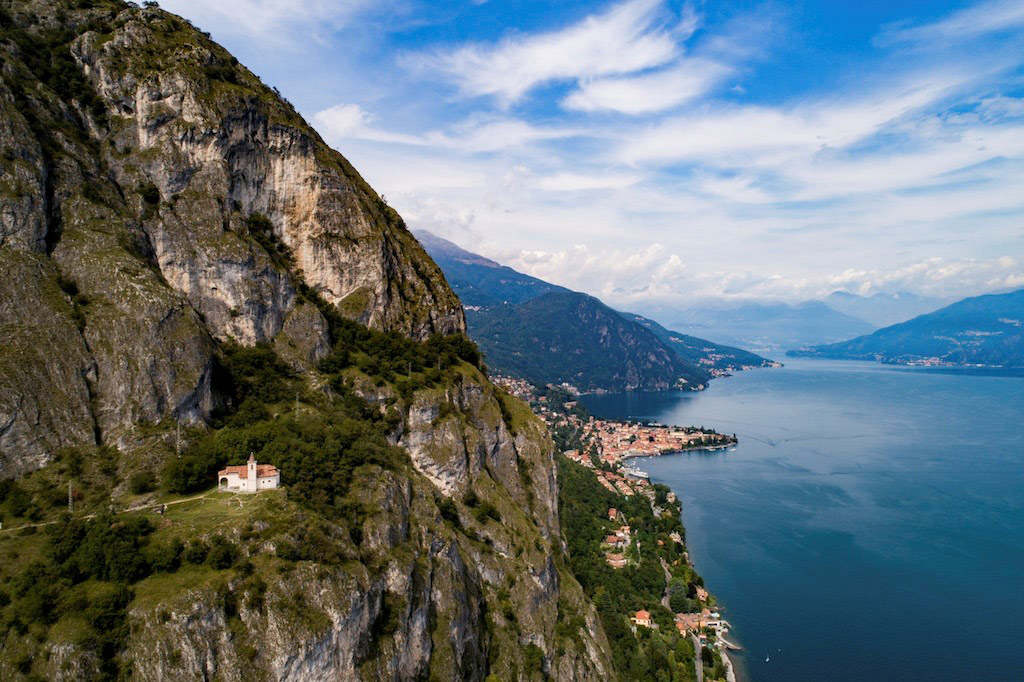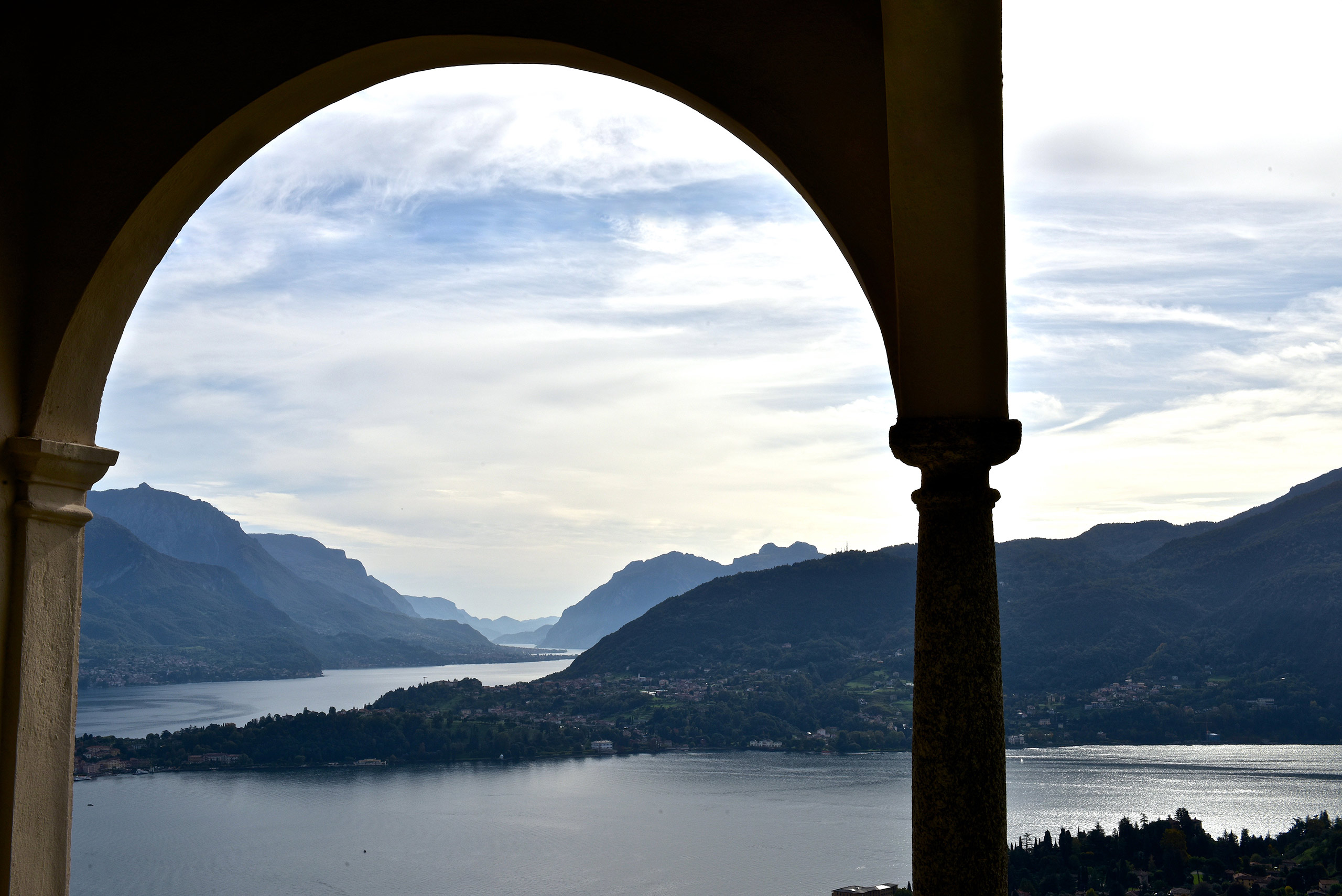The Church of San Martino: a fable from on high

If you’ve ever read a bedtime story (or had one read to you); if you have ever imagined an enchanted forest with centuries-old woodlands and trails meandering through pebbles, flowers and pillows of moss;

if you have ever uttered the magic phrase “happily ever after”, then this breathtaking walk to the Church of San Martino is for you. A very gentle hour-and-a-half climb, slightly uphill, rewards you with one of Lake Como’s most spectacular panoramas across historic villages from Bellagio to Varenna and the craggy peaks that culminate in the almost 8,000-foot Grigna massif. At 1,500 feet, our destination isn’t nearly that high, but the sight of that little white church perched on a rocky outcrop over the lake does evoke images of brave mountaineers with their ropes and crampons dangling. We don’t need anything of the kind, just a pair of hiking boots, comfortable clothes and off we go in the capable hands of Mario, one of our area’s best mountain guides.
Just outside the old town of Griante, the landscape changes – as does our pace – as fields and meadows give way to the beginnings of a great forest. Now we climb, pausing at a hairpin bend, strolling past votive chapels of the Stations of the Cross, gazing down where everything seems so small and distant. Silence reigns between the trees, save for a quietly babbling brook and birds calling in flight. The ground has its own tale to tell, it seems, and a closer look at the stones and rocks dragged for miles by the moraines reveals the origins of Lake Como, born eleven thousand years ago by the advance and retreat of a massive glacier. We need only raise our gaze to return to modernity as we reach our destination. There it is, our little mountaintop church, an almost miraculous feat of architecture. After all, wasn’t it a miracle that brought it into being in the first place?

Right after leaving the Grand Hotel Tremezzo, we head toward Griante and its labyrinth of ancient alleyways. It was the Celts from Central Europe who first founded the town in the fifth century B.C., calling it “the land of the sun”. The Romans were the next to arrive, using the strategically located outpost to monitor boats and trade routes. Nine hundred years later Stendhal used Griante’s local color as inspiration for several scenes in The Charterhouse of Parma. It wasn’t long before England’s Queen Victoria, Russia’s Tsar Nicholas II and Germany’s Emperor Wilhelm II graced these same shores with their presence, beguiled by the climate and colors of this “land of the sun”. Not hard to imagine that they, too, made their way up to the Church of San Martino. Another century passes and in the mid-1900s Konrad Adenauer, Germany’s first Chancellor and one of the founding fathers of the European Union, followed in their footsteps.

Once upon a time not far from where we are standing, a little girl found a wooden statue of the Virgin in a cave, hidden for safekeeping during the religious wars. To mark the joy and the significance of the discovery, the locals gave the statue pride of place in their main sanctuary. Until, that is, the Virgin disappeared one night, only to be found once again near the cave that had given her shelter so many years ago. The villagers heard the message, loud and clear. And so it was in the 16th century that they built the Church of San Martino, or The Shrine of Our Lady of Grace. Today, the magnificent views strike many as the more inspiring miracle. A wonder in any season and at any hour of the day. The sky so close you can almost touch it; the lake sparkling below. And on a table on the lawn just below the portico our aperitivo awaits, local cheeses and cured meats on a rough wooden board, freshly baked bread and a glass of wine. Glasses raised before we make our descent, we toast to other enchanted forests to wander and more tales to tell.



